by Eric Meier
I remember in my (slightly) younger days, stepping into a big box hardware store and picking up some shrink-wrapped boards labeled “mahogany” with prices that seemed just too good to be true. I told the employee that they had very good prices on mahogany, and he half-smirked and hesitantly commented “well, there’s a lot of different types of mahogany out there…” So began my early lessons in this sometimes-coveted and sometimes-disdained wood. Little did I know that these discrepancies stemmed from the woodworking equivalent of comparing apples to oranges.
Un-jumbling the Mahogany mess
Hypothetical situation: So you’ve just stumbled across some sort of “mahogany” wood, and you’re wondering if you have the real deal. After all, there are currently over a half dozen types of mahogany listed on The Wood Database. Much like cedar, the “mahogany” label gets tossed around with relative liberality—and not always with regard to the botanical designation of the wood in question. Ultimately, the ambiguous term mahogany remains somewhat subjective. But regardless of where anyone happens to draw the line on what is and is not true mahogany, certain facts and scientific classifications of the trees remain constant, and a general consensus can at least be made on the objective facts surrounding these woods.
But before we sort everything out, it would be helpful to ask a needed question: why? Why bother trying to sort things out? If it looks like mahogany, what’s the difference anyhow? A lot, it turns out. Beyond simply being worth more in terms of dollars per board-foot, there are practical implications to using true mahogany. Listed below are the ideal characteristics (hopefully) found in the wood: chances are most non-mahoganies will lack at least one (or more) of these characteristics.
What makes mahogany so great
“Rosewood.” “Teak.” “Satinwood.” Each well-known wood has along with it a set of expectations. Mahogany is no different. From the top-notch mahogany of yesterday, one would expect to encounter the following characteristics of the wood:
- Excellent workability. Mahogany is known for its cooperative nature and easy sanding and machining, with a Goldilocks-esque balance of density thats just hard enough but not too hard. When the grain is straight and consistent, there’s not much that can go wrong.
- Excellent stability. As much as it’s known for its workability, mahogany is equally known for its superb dimensional stability. Flat pieces will remain flat. Joints and glue-ups will remain intact. In the midst of seasonal changes in humidity, mahogany exhibits minimal shrinkage and swelling.
- Decent rot resistance. Perhaps not to the same level as Teak or other exotic tropical timbers, but certainly respectable. Though younger plantation-grown trees aren’t quite as durable as the older wild-grown trees of centuries past.
- Beautiful grain. Mahogany can sometimes be rather plain and almost utilitarian, but on other pieces, it ascends to the heights of sophistication. What antique bombe chest would be complete without exquisite crotch mahogany veneer drawer fronts?
- Large, clear lumber. Mahogany trees get huge. They’re both tall and stout, yielding long, wide, knot and defect-free boards.
The Inner Circle: Swietenia
By even the strictest standards, woods in the Swietenia genus comprise what is sometimes known as “genuine mahogany.”
Cuban Mahogany (Swietenia mahogani)This is the original mahogany. Historically, these huge trees yielded exceptional lumber, but over-harvesting and just plain wastefulness (logs as large as twelve inches in diameter were used as firewood) led to this species’ depletion. In 1946, Cuba banned all exporting of the wood due to over-harvesting and high demand; it has also been in scarce supply from other sources in the Caribbean as well. Today, the lumber has become so obscure that the term “genuine mahogany” now applies almost exclusively to its close relative, Honduran Mahogany (Swietenia macrophylla). Small boards and pieces are intermittently available: these are usually from storm-damaged trees grown locally (i.e., within the United States).
Honduran Mahogany (Swietenia macrophylla)Following closely in Cuban Mahogany’s footsteps, Honduran Mahogany is from the same genus (Swietenia), and it’s closely related in nearly all characteristics. All species within the genus are listed on CITES appendix II, and nowadays a fair amount of this wood is grown on plantations. It’s sold under a variety of common names, including American Mahogany, Genuine Mahogany, Big-Leaf Mahogany, and Brazilian Mahogany. Despite the abundance of common names, they usually all refer to just one species—when in doubt, verify the scientific name: Swietenia macrophylla. It’s every bit a true mahogany as the original Cuban species that became commercially exhausted in the mid-20th century.
Identification: Swietenia species can be very hard to tell from one another, but they can usually be distinguished from other species listed as mahogany (see following species further on in this article). All Swietenia species will have marginal parenchyma when viewed on the endgrain (see 10x endgrain scan). What this means is that there will be rows of light brown cells at the border of every growth ring—somewhat mimicking the annual growth rings found in temperate ring-porous woods. While other lookalikes such as African Mahogany (Khaya spp.) will generally not have these marginal parenchyma bands (though the color of the wood itself may change from light to dark simulating growth rings as well, the tight parenchyma rows will usually be lacking). Presence of marginal parenchyma strongly suggests a Swieteniaspecies, though in rare circumstances, Khaya species can also display these cells as well.
In finished pieces: Another trick to tell Swieteniaspecies from Khaya species, especially if you do not have access to the endgrain, is to look for ripple marks on a flatsawn surface of the wood. Basically, on many pieces of Swietenia-genus mahogany, the rays (small reddish brown slits) will collectively be arranged in neat little rows (called storied rays), which appear as minute little ripple marks that are seen clearest on flatsawn portions (see accompanying scan—you will more than likely have to view the full-size image to make out these small details). These ripple marks are sometimes (but not always) seen in Swietenia species (as well as Sapele—see further down this article), but almost never in the African Khaya species. An absence of ripple marks is ambiguous (could be either genera), while the presence of ripple marks strongly points to a Swietenia species.
How not to tell them apart: By color or weight. Swietenia species of mahogany, depending on the growing conditions and age of the tree, can vary widely in color and density. It’s all over the map. Some can be darker red and with dark streaks, others can be much paler and lighter in weight. Just viewing the facegrain of a wood sample and using your gut instinct to differentiate the two is unreliable.
Mexican Mahogany: It should be noted that a third Swietenia species is sometimes encountered: Mexican Mahogany (Swietenia humilis). This tree is much smaller than the other two species listed above, and as a result, it usually yields lumber of poorer quality due to the inherent problems of smaller trees (that is, knots and irregular grain is usually present, as well as much smaller available lumber). But from a practical standpoint, wood from all Swietenia species should be evaluated objectively irrespective of the actual species. It is the author’s opinion that the primary reason that Cuban Mahogany has been held in such high regard is because the wood was originally collected from very large wild trees which yielded excellent lumber compared to today’s plantation grown mahogany—it’s all based on growing conditions and tree age, and all other things being equal, Swietenia species wood is virtually identical.
The Outer Rim: Khaya
Depending on who you talk to, African Mahogany in the Khaya genus may or not be considered the real deal. For most, it’s close enough in appearance and characteristics to carry the mahogany label without controversy, but purists will be quick to draw a distinction between the mahoganies of the New World and those from Africa.
African Mahogany is comprised of a handful of species in the Khaya genus, such as K. anthotheca, K. grandifoliola, K. ivorensis, and K. senegalensis. While these species are from an entirely different genus (and continent) than the wood classed as “genuine mahogany,” taking a step up the botanical ladder from genus to family, both fall into the Meliaceae family, so the two, while not directly related, aren’t far off in the family tree. And the family likeness is apparent in the wood as well. Appearance-wise, most people do a double take and aren’t sure if they’re looking at Khaya or Swietenia mahogany. Both types also come from very large trees, so quality lumber in very large sizes and widths is common. African Mahogany also works well, though it tends to have a more interlocked grain than Swietenia species, so tearout and fuzzy surfaces (during planing or carving) can be an issue, but overall it’s still tolerable to machine.
Identification: As mentioned previously, the wood of African Mahogany features an endgrain that is, for the most part, absent of any discernible annual or seasonal growth rings. Though the color of the wood can gradually change color through different seasons, Khaya species usually (rare exceptions do exist) lack the marginal parenchyma that are so common in Swietenia species (see the endgrain scan of African Mahogany to contrast the relatively bland endgrain with the clearly delineated growth boundaries of the Honduran Mahogany endgrain sample shown further up).
Interlocked grain: In addition to the lack of ripple marks (explained above under Swietenia species), Khaya species also tend to have a more interlocked grain, and will exhibit more pronounced ribbon-stripe patterns, especially when quartersawn. However, as with nearly all characteristics differentiating the two genera, there are outlyers and exceptions to the rule. But taken collectively, when considering the marginal parenchyma, ripple marks, and interlocked grain, an increasingly confident identification may be made of an unknown or questionable sample.
The Periphery: Meliaceae
Along the outermost fringes of what most consider to be called mahogany, there are a handful of other genera and species that are technically related to mahogany: much like the African Mahogany species in the Khaya genus, this somewhat eclectic group of hardwoods are all members of the Meliaceae family.
Similar to mahogany: Sometimes called Sipo, or even Sipo Mahogany, this wood has similar mechanical and working properties to genuine mahogany, and the overall appearance, while generally a bit darker in color, isn’t too far off either.
Different from mahogany: Spotty availability coupled with its overall obscurity has probably kept this wood out of the limelight. It lacks the exceptional dimensional stability of genuine mahogany, though it is by no means an unstable wood.
Sapele (Entandrophragma cylindricum)
Similar to mahogany: Very large trees yield clear quality lumber that resembles genuine mahogany in both appearance and mechanical properties.
Different from mahogany: Sapele is a star in its own right, and has its own unique characteristics. It’s darker in color, heavier, and exhibits more varieties of figured grain (pommele, ribbon-stripe, etc.). Its interlocked grain also mean it’s a bit more challenging to work with than genuine mahogany.
Identifying Sapele and Utile: These two species are both in the Entandrophragma genus and are very closely related. They may be separated from Swietenia and Khaya mahogany on the basis of their endgrain. Both Sapele and Utile have banded parenchyma (visible as horizontal lines in the accompanying scan) that occur consistently throughout the wood—not just at the annual growth boundaries. Additionally, the two woods tend to be heavier and darker than Honduran or African mahoganies, and both have a pleasing cedar-like scent when being worked. Sapele can usually be separated from Utile on the flatsawn surface by checking for storied rays. Sapele will have ripple marks (formed by the storied rays) evident on the flatsawn surface, while Utile lacks this feature. If the woods are quartersawn, Sapele has narrower, tighter, and more uniform ribbon stripes, while Utile’s are wider and more erratic.
Similar to mahogany: Bosse is closer in color and grain to genuine mahogany than the two previous species, and its the weight, stability, and mechanical characteristics are also comparable too.
Different from mahogany: The grain of this species is all over the map: sometimes it’s straight, sometimes it’s interlocked or highly figured. The inconsistent availability and figured grain have primarily limited this wood to decorative wood veneer applications.
Spanish Cedar (Cedrela odorata)
Similar to mahogany: Grain can be somewhat similar to genuine mahogany, though color is much paler. Good stability and workability.
Different from mahogany: Considerably lighter in both color and weight. Much softer. Very aromatic. Not a practical mahogany replacement in most instances.
Australian Red Cedar (Toona ciliata)
Similar to mahogany: Sometimes referred to as Indian Mahogany, this wood is known to woodworkers in North America as Australian Red Cedar. It was once placed in the Cedrela genus alongside Spanish Cedar (Cedrela odorata), and the two are very similar in most respects. The color can be a bit more reddish than Spanish Cedar, but still not quite the same shade as true mahoganies.
Different from mahogany: Still lighter in both color and weight, and softer. Very aromatic. May be a practical mahogany replacement in some instances.
Similar to mahogany: Sometimes sold under the name “Royal Mahogany” by flooring dealers, the overall appearance, weight, and mechanical properties are very similar to genuine mahogany.
Different from mahogany: Slightly more difficult to work, and not quite as stable, but still an underrated and obscure species.
Avodire (Turraeanthus africanus)
Similar to mahogany: Sometimes called White Mahogany, Avodire fits the description well. It has similar grain, weight, and mechanical properties—it looks like a blonde version of African Mahogany in the Khaya genus.
Different from mahogany: Besides the obviously color difference, Avodire has poor outdoor longevity, which restricts its use to interior/protected applications. Also, irregular or interlocked grain present can make working and machining troublesome at times.
African Walnut (Lovoa trichilioides)
Similar to mahogany: Despite its common name, African Walnut is not closely related to the true walnuts in the Juglans genus. The grain and density can closely mimic genuine mahogany on some pieces, and its mechanical properties and stability are comparable to mahogany as well.
Different from mahogany: Color is much more variegated and streaked, and is generally darker and redder than most mahogany. Also, the interlocked grain can make working this lumber less pleasant than Swietenia species.
Similar to mahogany: Botanically, it’s in the Meliaceae along with the rest of the woods listed from here on up. Also, it’s weight, strength, and workability properties are similar to genuine mahogany.
Different from mahogany: Being a ring-porous hardwood, the grain isn’t really too similar to mahogany, and its dimensional stability isn’t quite up to standards either—at least not in comparison to mahogany. In terms of appearance, it’s probably the least likely to be confused for mahogany of all the woods on this entire list.
Outliers: Not in the Family
Despite any superficial resemblance to genuine mahogany, there are still a number of wood species that are completely unrelated to any of the mahoganies in the Meliaceae family. You have to trace pretty far up the hierarchal tree to find any sort of botanical commonality between any of these woods. Basically, about all you can say that they have in common is that they are all hardwoods (angiosperms).
Philippine Mahogany (Shorea spp.)
Sometimes called Lauan, this wood is frequently made into plywood. Of all the various trees that are outside of the the Meliaceae family, perhaps the many species within the Shorea genus come the closest to genuine mahogany in terms of overall appearance and working properties. Unfortunately, there’s a great variation within the Shoreagenus—even more of a window of variation than that found in the Swietenia or Khaya genera. Also, the rot resistance of most Shorea species is much poorer than most types of mahogany. This wood is (thankfully) being called by more honest terms as of late—it goes by the common name Meranti.
Santos Mahogany (Myroxylon balsamum)
Of all the woods with “mahogany” in their common name, this one perhaps is the one most likely to be a sales gimmick to help sell more wood (which figures, since it’s primarily used for flooring—an industry rife with imaginary and flattering names). Although this wood may have a superficial likeness to true mahoganies in terms of grain pattern, it’s much heavier, and quite difficult to work—a far cry from the ideal that one would expect of a wood bearing the name “mahogany.”
Mountain Mahogany (Cercocarpus spp.)
If the naming of Santos Mahogany (Myroxylon balsamum) seemed to push the limits in terms of comparative density with genuine mahogany, then Mountain Mahogany is completely over the top. It is actually one of the densest and hardest woods in the United States—the dried wood is heavy enough to sink in water. To its credit, the wood’s color and overall appearance are vaguely reminiscent of mahogany, and it does have good stability, but that’s about where the similarities end. But the ambitious naming is much more forgivable as this wood is not commercially harvested, and was not done with the motive of increasing sales.
Swamp Mahogany (Eucalyptus robusta)
Despite its common name, this “mahogany” is actually a full-blooded member of the Eucalyptus genus—one of the botanical trademarks of Australia. Even though Australia is considered its own continent, in the world of trees it could almost be considered its own world. Australia has its own version of nearly every type of wood common to outsiders: they have their own maple, walnut, ash, beech, and so forth. However, just because the common name sounds similar doesn’t mean that the wood itself is a close match. In the case of Swamp Mahogany, the wood is slightly more dense and difficult to work, and the dimensional stability is much worse.
Mahogany: it’s tough to spell correctly
There is one last quirk that only applies to online searches. Having access to manually-typed search queries on this website for over a decade now, I can say far and away, mahogany is the most mis-typed and misspelled wood name—probably by a factor of ten. (After all, every other letter is a vowel, with very similar sounds, and you have to get them all right!) And so, in the absence (or failure) of any sort of auto-correct feature, I will list common misspellings of the wood to act as a catch-all net so that users are not ejected into the abyss of “no search results found.” Common misspellings (listed in order of prevalence), are as follows: mahagony, mohagony, mahogony, mohagany, and mahagany. Honorable mentions to the mahogany-relative sapele (which, to be honest, doesn’t really have a single “correct” way to spell it anyway), is also typed as: sepele, sapale, sapelle, sappele.
Are you an aspiring wood nerd?
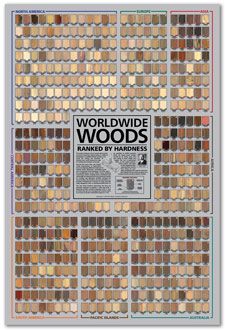

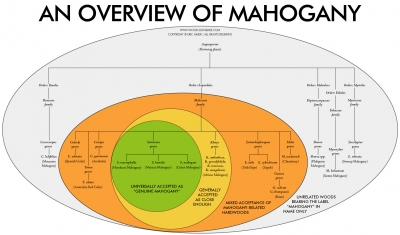
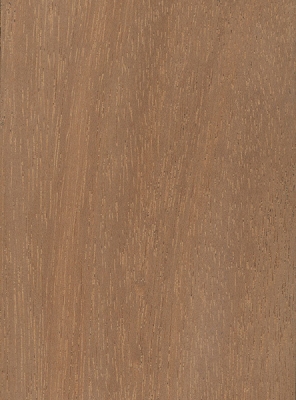
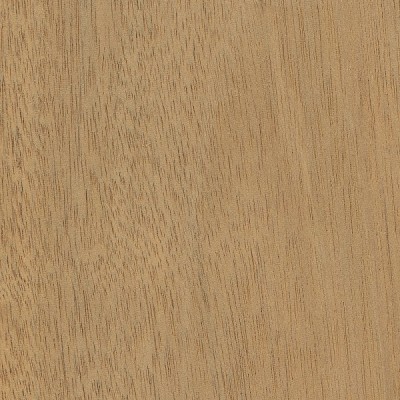
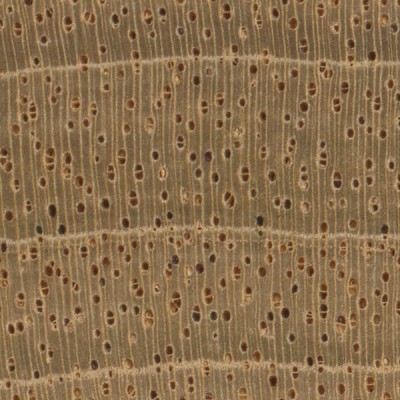
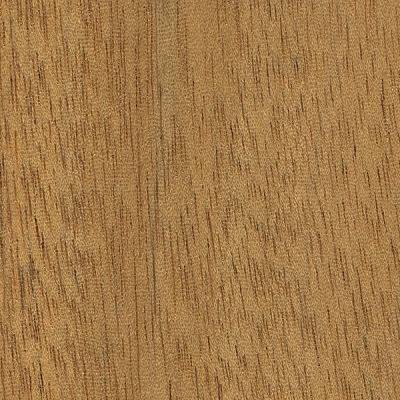
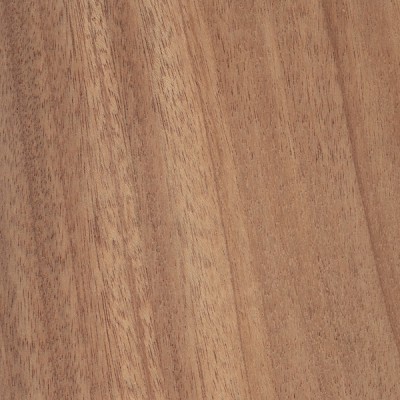
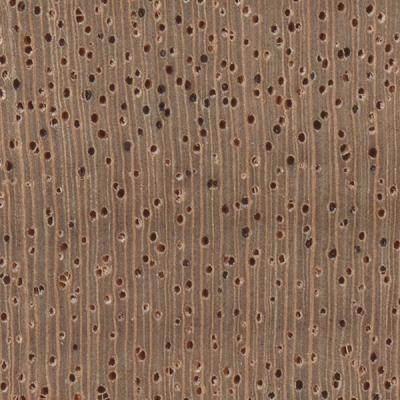
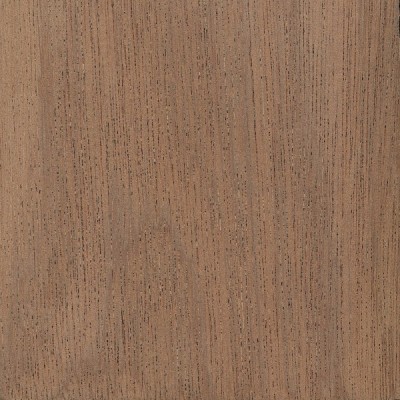
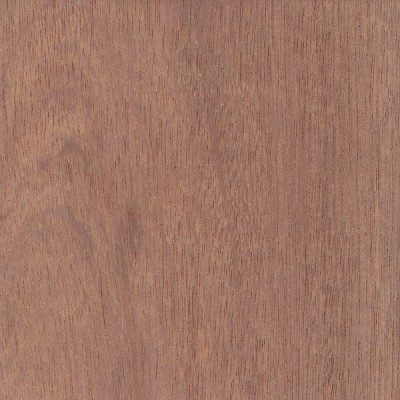
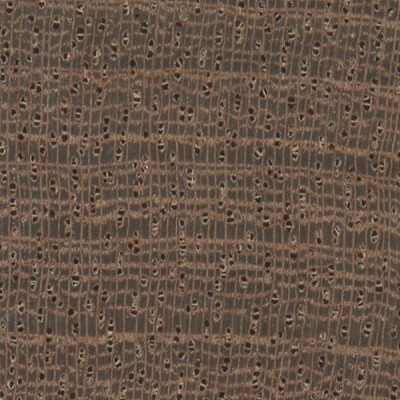
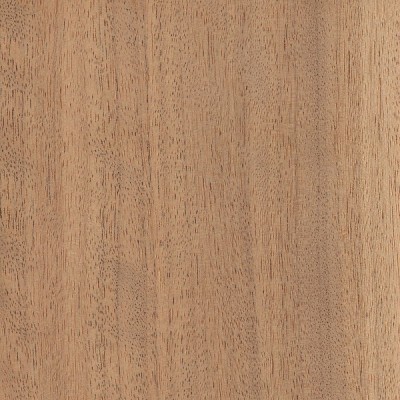
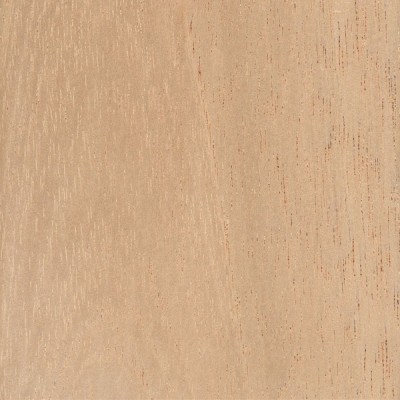
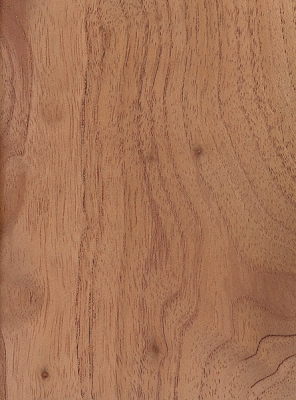
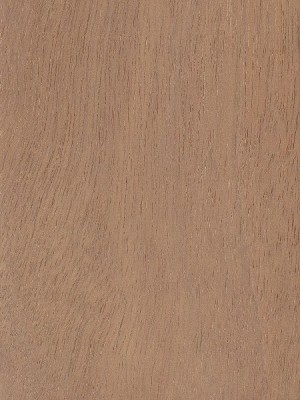
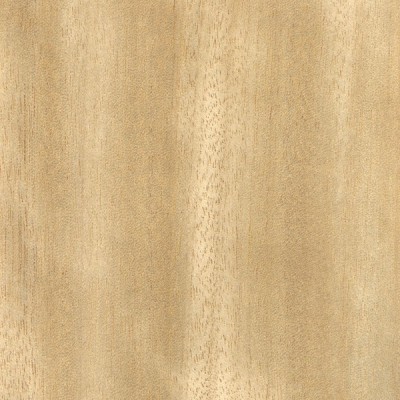
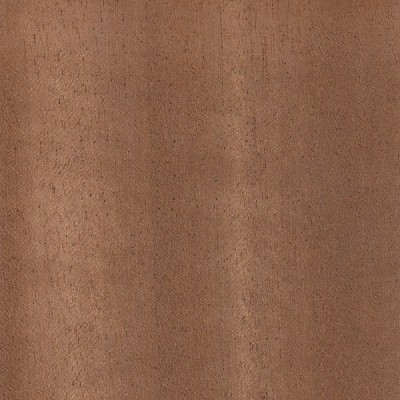
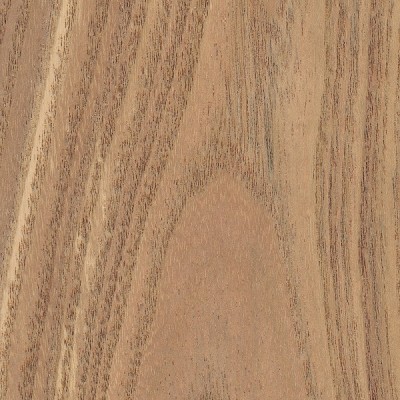
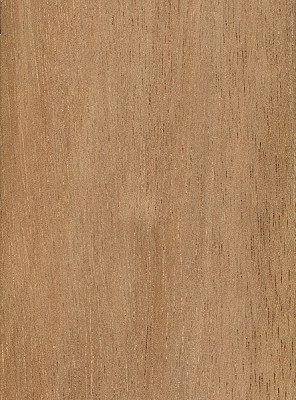
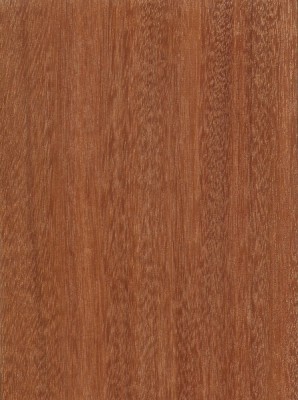
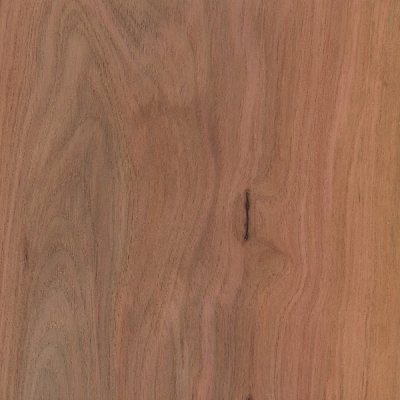
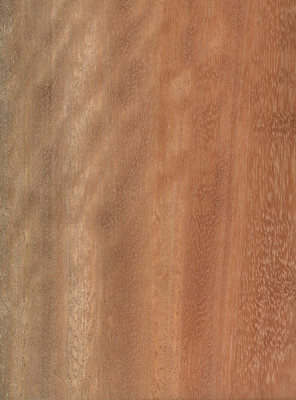



Just as a postscript to the intro story I mentioned at the beginning of this article, some 15 years later I see Menards has added in their online description of their “mahogany” boards that it is (as I had eventually surmised) light red Philippine mahogany. I’m not sure if this is now mentioned on the actual packaging of the wood in the store, but it sure fooled me back in the mid 2000s.
Light red Philippine Mahogany is now being used to build some electric guitar bodies and is called Meranti. I’m not sure when they
Yeah, Epiphone, Squire, and Ibanez for sure. The sales reps for these companies are very clear on tonal training. The wood looks great. It is extremely lifeless and dead in its musical integrity (despite what Google says). It is very cheap to source. You can tap the wood with your finger. Its easier to tap next to a premium wood- to understand the difference. My Gibson SG is by far more resonant and full sounding than Epiphone SG. I’m sure you’ve come across scenarios like this. I have a Meranti Ibanez S series I love to pick up a lot.… Read more »
Really informative article. I was salvaging some wood from a broken old oak table and found that while most of it is solid oak, parts of it is a secondary wood with a thick oak veneer. The secondary wood actually looks like mahogany to me but I can’t imagine anyone using mahogany as a secondary wood. Could it be spanish cedar? Do would furniture makers use spanish cedar as a secondary wood?
I agree, it looks like genuine mahogany in all aspects. Possibly they used it because of its stability? Seems weird, but I guess in a time when it was much more abundant, it made more sense.
This was a fascinating article. I’ve been working with, what I thought was mahogany, for a little while now. Thanks for the info! Now, I do have a question about this “mahogany”. It was given to me by a neighbor, who said it was over 100 years old. Pieces of some now broken furniture. Side by side of before and after planing. Grain, and end grain.
Is there a noticeable scent when you cut it? Would need to get the endgrain cleaned up with fresh cross cut and maybe some sanding to see details better. Too rough right now.
Is this a better photo of the wood example?
Sorry, the endgrain surface is too rough to make out detail. Possibly shave off a tiny bit off the end with a chop saw and/or finely sand it to get a better look at the end.
We are going to have a 36’ wood fence built in our backyard (Los Angeles, CA). The fence guy recommended mahogany instead of redwood due to price of redwood and scarcity of it. Are you able tell if this is Mahogany from the sample he gave me? If so, can you tell what type it is?
The endgrain is far too rough to make out any details, so I can’t tell from that picture, sorry.
Hi all,
just found this great page?
Are there anyone here that could help me identify this mahogany ?
it came to Sweden in the fifties as parts of over seas shipping crates.
I just got hold of 10 big pcs of this material.
thanks!
/Isaac
Nobody knows?
That looks like mahogany
An anyone tell me what this is?
The large grain is certainly similar to mahogany, though I’m not sure on the color. Perhaps a clear photo of the endgrain would be of help.
What type of mahogany could this be?
To me it looks most like a genuine Swietenia species, but it could also be African Khaya species. Would need to see a clear shot of the endgrain to help confirm.
Its merbau… Just found a label on the lumber. So whats merbau? Feels real heavy and quite hard…
https://www.wood-database.com/merbau/
What type of wood is used in dresser drawers looks like a lighter mahogany .
I have a slab of hardwood which I picked up somewhere decades ago. It still lays perfectly flat. It has lovely dark and light graining with very dark flaming and a rather large knothole on one side. It is just under 3/4″ thick, 11″ wide at its base and 18″ long, with 14″ of length above the 4″ knothole, and all edges are raw except for the sawn end. From the photos, does it look like it is real mahogany? Would such a piece have any purpose or is it best applied as firewood? Thank you.
Firewood? You’re kidding. Look at it…. It is black walnut
I think it was a bit darker than i previously stated, it looks a lot more red-ish, guess i remember wrong. Second image to give a better perspective.
Going to try and restore an older boat, probably built/restored by my grandfather in maybe the 1940-60s something maybe. So was wondering if you could gauge what type of mahogany it is, or if its a type of teak. Want to know because i want to treat the wood the best way while restoring it. It used to be a honey looking color, i think, at least not especially dark. When it looked good it reminds of Honduran Mahogany , because of the dark spots and streaks
Would greatly appreciate any type of input, have a good one
I just bought a Craftsman Tudor house in Oregon with all the original woodwork-unpainted! It’s stained dark brown/red to mimic mahogany, but I know it used to be fashionable to dress up other species like mahogany in the early 20th century – this house was built in 1910. I know it’s got a lovely smell when sanded and doesn’t gouge with my fingernail, but the grain doesn’t look like any of the sample images I’ve seen. Any ideas what species this is?
Very much looks like old growth Douglas fir, especially based on your location.
According to your comment on “Chinaberry (Melia azedarach)”, I think “Chinese Mahogany” or “Chinese Toon” (Toona sinensis, syn. Cedrela sinensis) is more likely expressing the characteristics of mahogany family. Although it looks similar, but two spices are native to different regions and have different characteristics.
Eric,
The first wood is 580kg/m³ and the second wood is much heavier with 700kg/m³. The second smells when sanding it, but it’s difficult to explain. A bit sweet and earthy I’d say. The first wood does not smell that strong and sands much easier. The wood was stored indoor. In the first wood I can clearly see light brown stripes of marginal parenchyma (it can’t be seen very well on the picture), so I hoped that it would be honduran mahogany…
thanks,
Florian
Here the second…
How heavy is the wood? Any noticeable scent when sanding it? Doesn’t look like mahogany to me.
Hello,
I got a 2nd hand mahogany table. I want to use it for guitar necks but I’m not sure which wood it is. Any Idea? Apparently two different types of wood where used. Here the first type of mahogany.
thanks,
Florian
With those large pores being that frequent per mm, it looks most like a Shorea species, so Philippine “mahogany” of some sort.
Any ideas on what this may be?
Walnut?
Sapele
Hello all,
could you please tell me what wood is it? Very few knots, hardness (looks like) 30% more than pine.
Many thanks, Andrey
Looks like oak
Picked up these chairs. Sanding now. Kinda curious on why the black grain. Supposedly Mahogany wood.
What is this wood
Looks like black cherry, wild cherry, rum cherry. From my experience, cherry seems to show the burning easily from too slow machine feed.
I just had an old piano, Hardman Peck restored and the 3 layers of paint removed. I was told the wood is mahogany.
I am thinking I will use a clear stain and poly on the wood.
Can you identify this wood? Am I ok using what I suggested or can you recommend something else.
I’ve had a hardwood flooring business for almost 40 years as well as being a woodworker and occasional furniture maker, but I’m stumped (no pun intended). I thought at first that it was Brazilian Cherry (Jatoba) but the Architect who had it installed years ago swears it’s a kind of mahogany. The current owners love the variation, especially the light pieces with the striations (I assume quarter sawn). Anyone know what it is?
Looks like Australian red gum to me….
Can anyone identify this wood?
Koa or Mahogany mini Taylor – does the label help?
A China factory is trying to convince me the moisture content of 30% is ok for chairs I want to buy because they are using african mahogany. Does this make sense to anyone?
What does “banded” mahogany mean?
More than likely it’s referring to mahogany that’s quartersawn and displays a ribbon figure — basically alternating bands of slightly lighter and darker grain where the tree’s interlocking grain can be see.
Hi,
I have classical guitar that master luthier claims is made of mahogany for backplate and sides.
However, to me it looks more like zebrawood. Can anyone comment on this ?
Just to avoid confusion, perhaps we are talking about two different woods when we say “zebrawood”? If you look at this page, https://www.wood-database.com/zebrawood/ it should be quite clear that the guitar is not zebrawood — at least, not the species that is pictured on that page and is in the Microberlinia genus. Perhaps you were thinking of another species?
I see now that is not zebrawood . but what mahogony has the look as this back side of the guitar?
Looks like Sapele.
Hi,
iside photo of baskplate . Can you identfy this kind of mahogony?
It would be either African mahogany (khaya ivorensis) or more likely sapele mahogany (entandrophragma cylindricum).
The two can appear similar.
One way to distinguish the two – African mahogany has no obvious smell. Sapele has a nice aroma, so smell the inside of the guitar at various times of the day depending on hot/cold/dry/humid.
If the timber is solid sapele, you should be able to smell it at some stage!
Good luck!
That is sapele no doubt.
Continued from other post. The wood of the porch also splintered shortly after installing before we sealed it, which the contractor fixed with wood glue. Should mahogany do that?
I had a my porch redone with mahogany. However, after it swelled and buckled over the summer, I am wondering if it is indeed mahogany. From what I understand, mahogany is not supposed to do that. What do you think?
In reading all the notes there in one important (to me at least) test that is not referenced, but might be of considerable interest to many. As I am using a laser to cut and engrave on wood what happens in terms of flames and cutting ability can be quite variable so some like wenge need a lot of power but does not char badly while Zebrawood will ignite and a tiny coal is likely to grow and consume the whole piece while others go out quickly. What I have as mahogany is the worst of all that I have… Read more »
What an amazing resource.
Eric, I own a large, heavy bookcase that has been in the family for about 70 years (likely 1930s built). I would like to get it professionally refinished. Lore is that it is “blonde mahogany” but I know nothing about wood and am wondering what I need to know before asking someone to restore/refinish it. I don’t know whether it’s veneer, etc. (Sorry for glare from camera flash, but it’s stored in a dark space where there’s not enough light to take a photo w/o flash.)
I can’t tell from that distance, sorry!
Thanks, sorry about photo limitations (all due to my access to the piece right now). My basic question is: is there such a thing as “blonde mahogany” or is that just a reference to the way the piece was finished? Thanks.
Hi, I recently obtained many pallets of wood that supposedly came from Boeing shipping crates collected during the 80’s and 90’s in Tacoma, WA. I was told it was “Brazilian Mahogany, violin/guitar wood”. They vary in color, pattern and density. Research gives me the impression it may be very valuable but I’m skeptical. Some have stenciled words like “Amazon Rainforest Brazil” “New Orleans” and others which I think are origins and destinations. Any information? Restrictions/potential infections/value? Thank you for any assistance!
Are you sure they are all the same species? That very wide sapwood looks non-typical, though that may be why they were used for pallets…
You would need to get a much closer shot of both the face grain and end grain of the wood to have a better shot at ID. Are they rather heavy, or how does their weight compare to other known woods?
I just bought some Boeing shipping crate slabs from a salvage place. They said “tropical hardwoods”. Looks like mahogany to my untrained eye – no idea what type which is what led me to this article. What surprised me was how light (density) it is and how quickly it sands making me think it’s not a hardwood. Photos attached. Possible to ID from these pics?
Thanks for the site and the advice!
Appears to have visible pores, so it’s a hardwood. Possibly light red meranti (or another Shorea species) that can be very lightweight and superficially resembles mahogany.
This site was very helpful. Thank you for taking the time to assemble it. I am refurbishing a 1969 eb0 Gibson bass guitar that had been stripped and drilled into and made monetarily worthless. These guitars are made of solid mahogany. I had drilled out the holes and cut some plugs from some “mahogany” I reclaimed from a table I made in college, only to find it’s color and grain to be very different from the wood in the guitar. This led me here. Your photos and descriptions lead me to believe that what I have to use is Khaya.… Read more »
Have you heard of Larry Robinson? He got his start doing inlays on a “ruined” electric guitar where his boss told him to do an inlay to cover up an errant drill hole. The rest is history… https://www.robinsoninlays.com/ He also has a book out called the art of inlay. Just saying… =)
Can someone help me identify this wood
I used to have lots of that wood. It is very heavy and dense. I believe it is teak.
I don’t think this is teak. It has the look of one of the ‘redwoods’ coming out of Asia: kempas, kapur or keruing.
The “mahogany” nomenclature in mountain mahogany is told to have come from it’s resemblance to the bars the cowboys leaned on frequently. I have heard there is an actual bar made from it in Eastern Oregon (one on my bucket list) It was used for roller-skate wheels, and there are restauraunts that specialize in mountain mahogany smoked meats. I work it everyday for a living and have done so for thirty years. Ironically my name is also Eric Meyer.
https://www.meyerfittings.com/
hi having problems i am not a skilled tradesman, i never got the skills to work with wood even though i loved the smell, anyhow have purchased a new build property and we have remodeled the kitchen with regret cabinets are no longer available according to paperwork they are light mahogany alas the units we have been able to buy are from b&q they were the only ones that we found 300mm wide and 150mm wide anyhow after getting them i was planning to redye them with gel i have seen in the USA but looking on your pages i… Read more »
I’m trying to identify some wood my father recently reclaimed from old “mahogany” interior doors. The two pieces (from the same door – top and bottom frame pieces of a glass panel door) have very different grain patterns, but I’m not sure if this is just the way they are sawn.
The house they came from is in the UK, and likely was built in the 80s.
Apologies for the double post below…here is a close up picture of the grain on the bottom half…
Hi! My father recently reclaimed some wood that was originally used in the top and bottom of a glass panelled door frame. It looks like “mahogany” to me, but the two parts have very different grain patterns. I’m not sure if this is just because they are sawn differently or if they are different species completely.
Is there any chance anyone could hazard a guess at what these are based on the photos attached? If it helps the house that the wood was used in is in the UK, built probably in the 80s…
Several months ago, I special ordered a guitar that was advertised as being made of “Mahogany”. Since they did not qualify it, I believe they were referring to Swietenia. My guitar order has been delayed. They’ve now changed the official specifications of the guitar from “Mahogany” to “African Mahogany”, and it appears I will be receiving a guitar using the new specs. I only know this from my own research. Should I care? I mean, would I be rationally justified in raising an objection to the switch to African Mahogany? I guess a legitimate rephrase would be to ask: If… Read more »
I bought a “Mahogany” guitar in July of 2018, the difference being that the Taylor Guitar company made it perfectly clear that the wood they used to build the guitar was Sapele. I played the guitar before I bought it and it was the tone, not the price or description of it that caused me to buy the guitar. If you get as lucky as me, your guitar will be as clear, full and loud as my Taylor and you will forget about that which is out of your control. (Do you care about the contents of the glue used… Read more »
Last one I promise?
All these photos are same wood. Old railway sleepers
Hi Mark, if it is heavy, very heavy, then it is probably red angelim. It could be an Australian wood if not, if you look at the endgrain, weight and hardness that will narrow it down a lot.
Can anyone ID this wood
Can anyone ID this wood?
A local woodworking shop gave me some 4 x 4 x 8′ Mahogany they salvaged from packing crates used in the importing of granite slabs from China and Brazil. They said Mahogany in those regions is as common as oak in the U.S. I doubt it is actually really Mahogany, but wondered if you had heard of using any type of Mahogany for crating heavy objects for international transport. Thanks
I have the same thing. It certainly looks like real mahogany….but is it?
Back in the early 90’s I’d see equipment from Taiwan come in on wooden pallets. Once in a while, the pallets would have stringer boards or, better yet, blocks of various mahogany-like woods. If the pallet was a throwaway, I’d pull off the blocks and give them to an accquaintence who was a wood turner.
I have two campaign chairs, at least one of which is from about 1880. They were made in London. They are described on most sites as mahogany but one needs two new cross spokes. What wood might they be and what woods could I use to make replacements? It is dark but being from that era I know it is likely stained.
This is a photo.
It’s hard to tell from that photo, considering the grain of the wood, as well as your location and date of the chairs, I’d say it is probably English Oak.
What mahogany steams the best?
Looking at this info in the hope of finding a Seyrah mahogany listed. We have a 1920’s boat built by JW Brooke of Lowestoft UK, which the original spec sheet shows as SEYRAH mahogany.
Anyone heard of this type of mahogany?
Yes, more than likely you are dealing with seraya, and depending on the type or grade, it is also sometimes called “heavy red seraya” — which is from the Shorea genus. So basically, it would be very closely related to the category listed as “Philippine mahogany” above — albeit a little bit heavier and (potentially) a little nicer and more durable than most other Shorea species.
Thank you for that information Eric. I think you are right, it does seem very likely to be the same.
When our wood was revealed in restoration it proved to be a very hard, pinkish wood.
Would that be classed as a “heavy” wood in your description and do you think it is a wood that would be more suitable for painting than to be shown varnished?
Trying to identify some wood. The unique thing is how it makes shreddy hairs when sawn, almost like it’s rubbery. It looks like mahogany more or less and doesn’t have much of a fragrance when sanded. Maybe someone recognizes that rubbery quality? I tried using it for a xylophone and it doesn’t have good tonal quality.
Do you by chance have any pictures of the wood?
Can I ask where you feel Indonesian mahogany falls on the spectrum? I believe it is a member of the meliaceae family and it’s species name is toona sureni. Does that put it in the periphery group? Can anyone tell me more about its characteristics or pros and cons?
You are correct, it’s within the periphery grouping. It’s a bit lighter in weight/softer than genuine mahogany, and would be closest to Australian Red Cedar (Toona ciliata) listed above.
Thanks for the reply Eric. My brothers-in-law sell Indonesian mahogany here in Java but would like to begin exporting. If toona sureni resembles Red Cedar, a prized wood, do you think exporting is a feasible proposition or is the wood simply not special enough to interest overseas buyers?
Hi, I bought timber lining about 15yrs ago in Australia and need to buy more but can’t remember the name. I thought it was American hardwood, western cedar in colour with blond through it which thought stripe was in the name. Sorry vague description if anyone can help as can’t find it. Can supply photo.
I used to see something sold as African Ribbon Mahogany, which looking at the pictures above seems to more closely resemble the Santos Mahogany than the African Mahogany? Anyone know what it is?
Based on the “ribbon” in the name, I’d be more inclined to say it was Sapele, which is quartersawn and sometimes sold as ribbon sapele. But, you never can be too sure with common names…
as eric says, it simply refers to quartersawn timber from either the khaya or entandrophragma genuses. you often get utile and sapele displaying a very attractive ribbon stripe figure on larger quartersawn boards. it is also fairly common in african mahogany which could be 3-4 different species within the kaya genus.